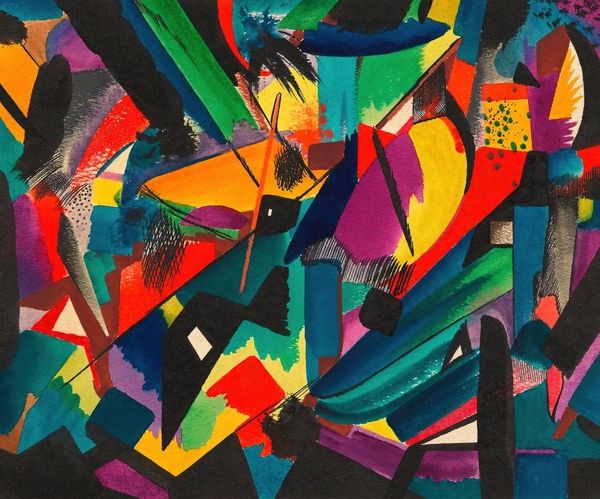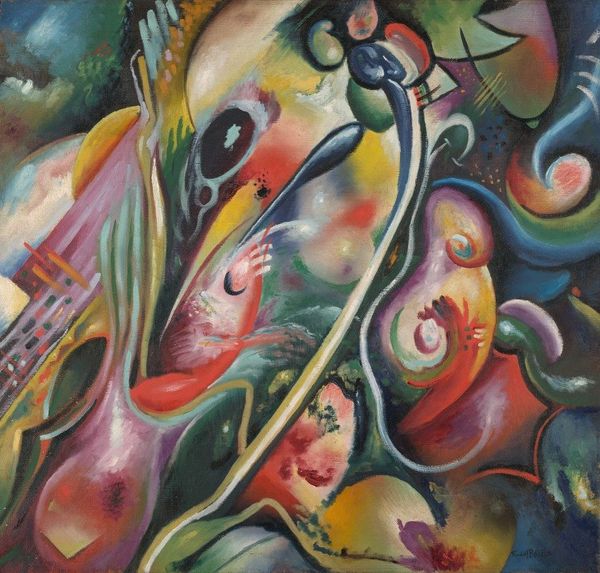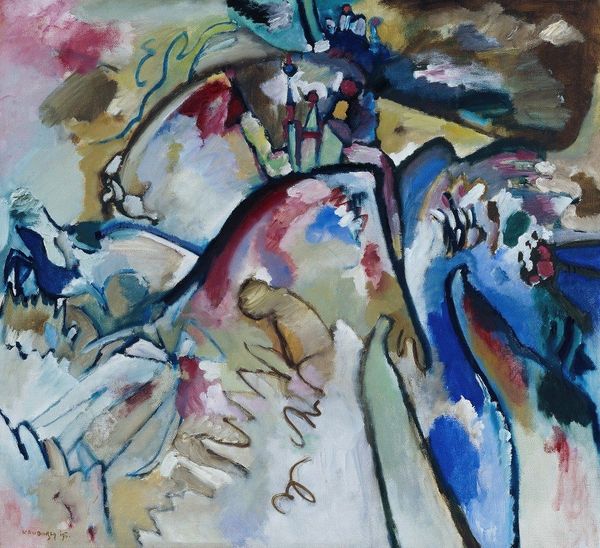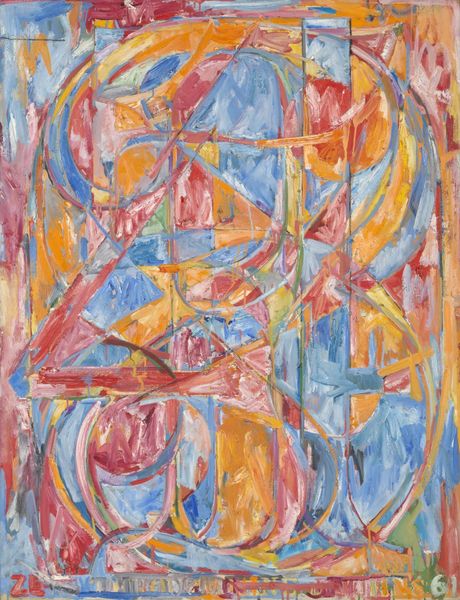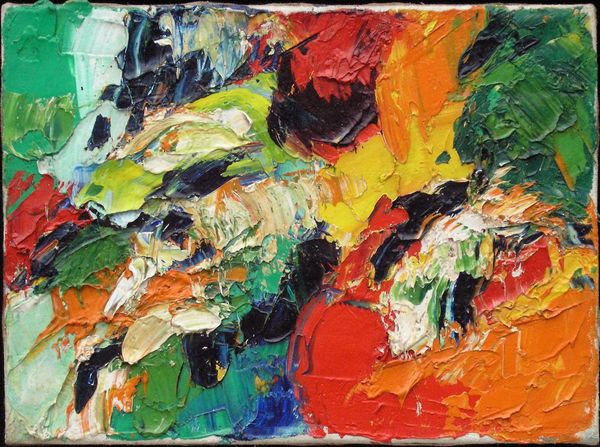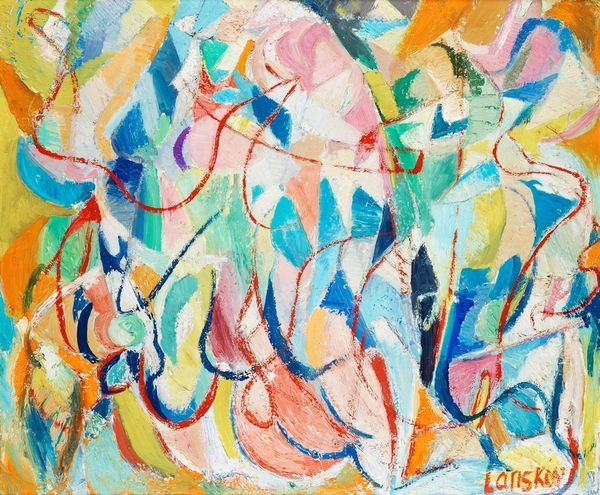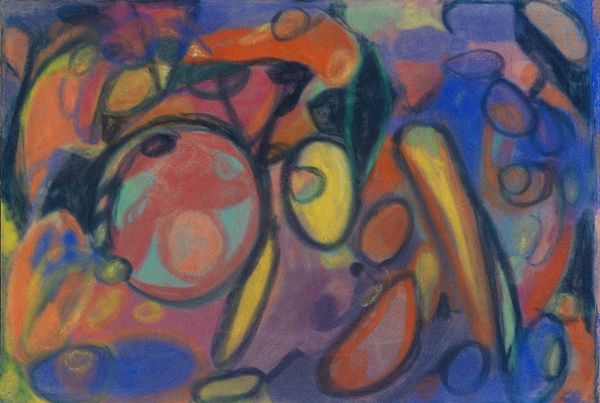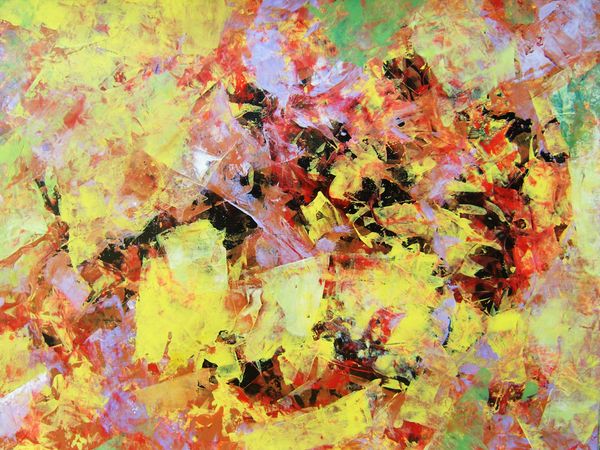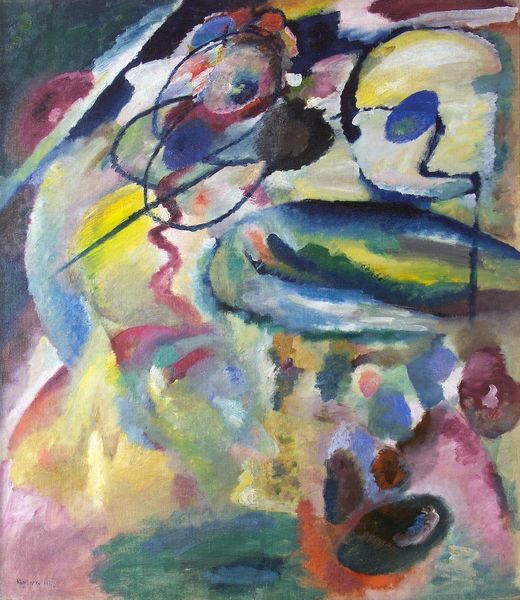
Copyright: Public Domain: Artvee
Editor: Here we have Wassily Kandinsky’s "Improvisation Flood," an oil on canvas completed in 1914. The swirling forms and clashing colors create such a turbulent and almost chaotic impression. What do you see in this piece? Curator: The title "Improvisation Flood" immediately evokes a sense of overwhelming emotion, doesn't it? Kandinsky, a key figure in expressionism and abstraction, believed that colors and forms could directly express the 'spiritual.' Think of it as a visual metaphor for inner turmoil or societal upheaval. Editor: So the flood isn't necessarily a literal event? Curator: Precisely! The symbolic imagery, like fragmented shapes, represents the breakdown of the old order, the societal norms, or perhaps even the artist’s own internal struggles. Kandinsky sought a universal language of form. Notice the interplay between dark and light. Does that spark anything? Editor: I see… the darkness almost feels like it’s encroaching on the vibrant colors. Is that a reflection of a specific anxiety or feeling? Curator: Considering this was painted on the brink of World War I, one might interpret it as reflecting a sense of impending doom, a world about to be washed away by conflict. He's giving form to premonitions of destruction, but also transformation. Think about it – the flood is destructive but it also clears the way for new growth. Editor: That's a powerful connection! So, this chaotic painting is not just random, it’s laden with meaning. Curator: Absolutely. Kandinsky wasn’t merely painting what he saw, but what he felt. It's about engaging with the symbols of the soul. Editor: It's fascinating how abstract art can carry so much weight. I definitely have a new appreciation for Kandinsky’s work now. Curator: Indeed. Exploring such works reveals how art captures more than just appearance; it reveals a tapestry of human emotions and shared cultural memories.
Comments
No comments
Be the first to comment and join the conversation on the ultimate creative platform.



